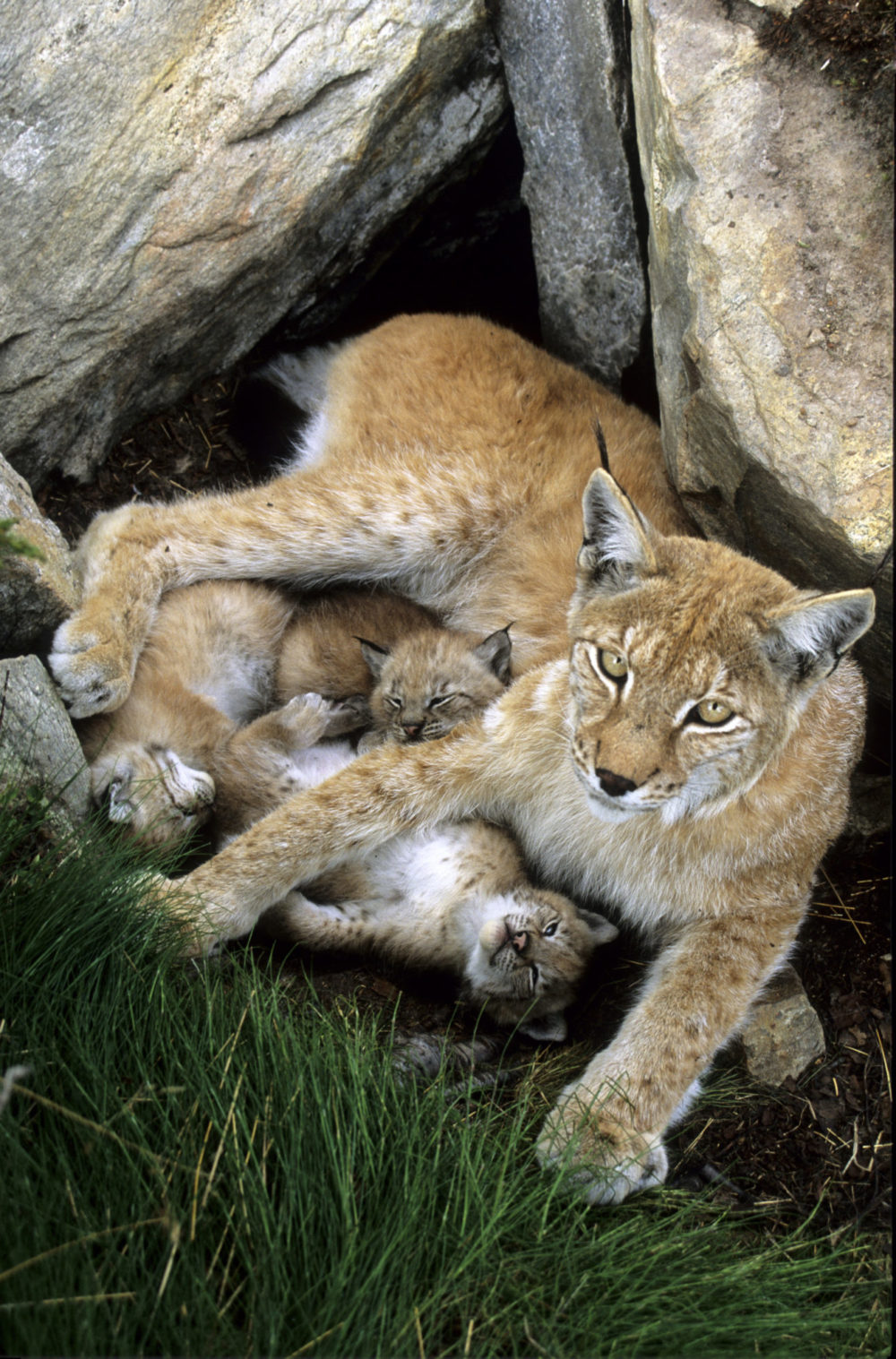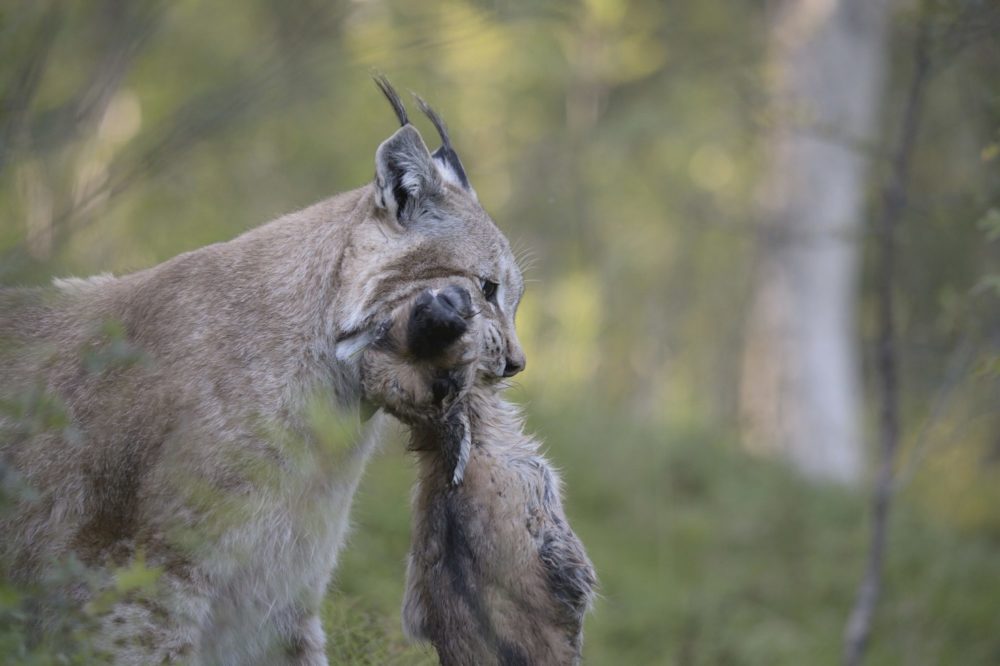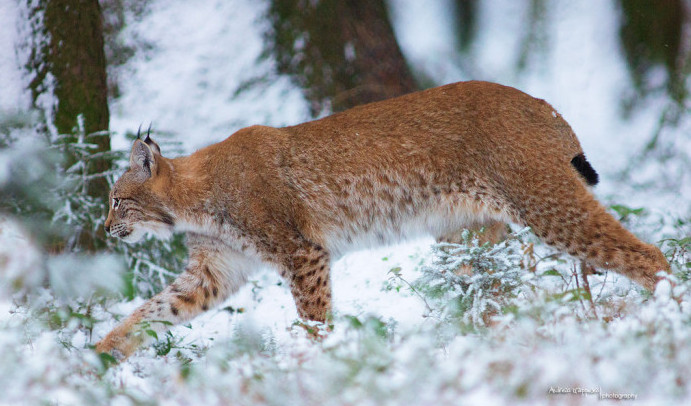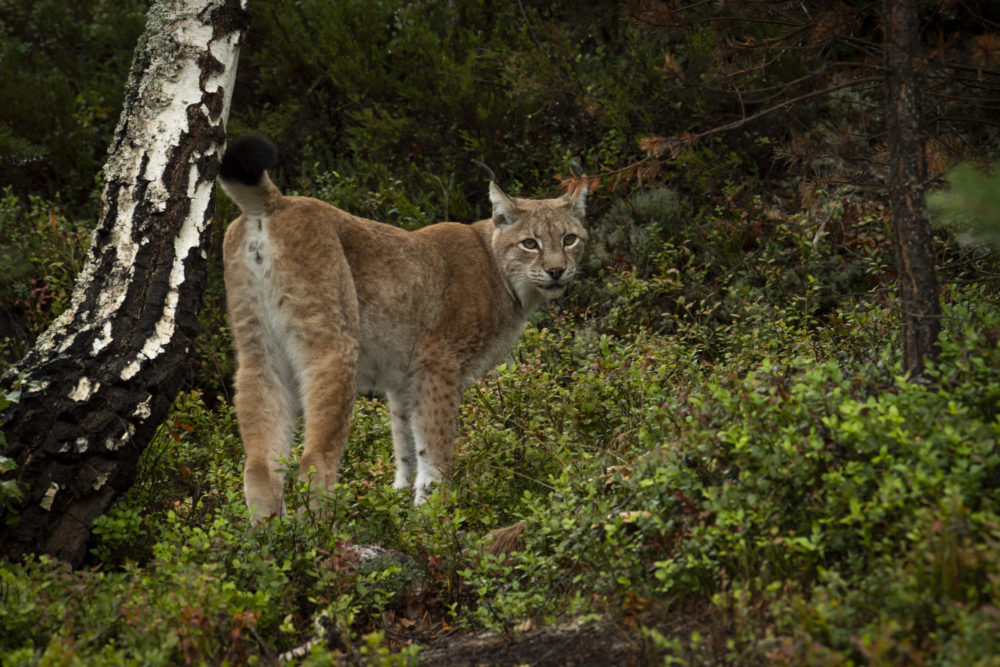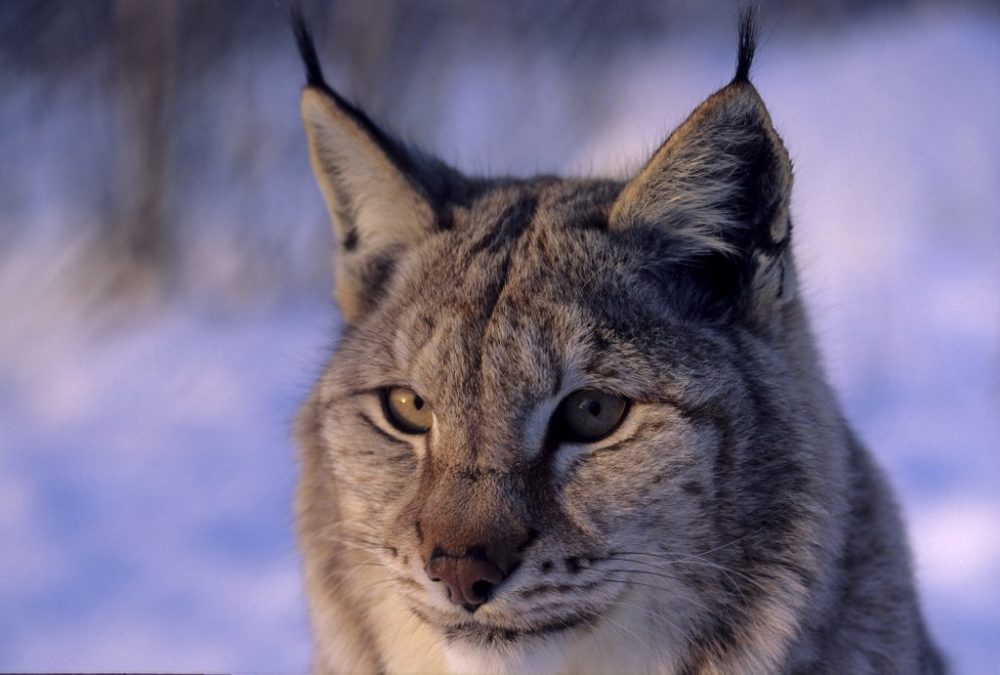About lynx
The lynx is our only cat and by far and away the most competent hunter among the large carnivores. Although it is frequently close to humans, the lynx is rarely seen. On this page, you can learn more about the secretive life of the lynx.
Lynx facts
Latin: Lynx lynx.
Family: Cat family (Felidae)
Length: 80 – 130 cm.
Weight: Varies from 8 – 25 kg.
Breeding season: February – March.
Number of young: 1 – 4.
Lifespan: 10 – 20 years.

Lynx tracks
The lynx leaves with impressions made by four toes. The claws are not usually visible, being hidden in a fold of skin within the foot. The lynx has large feet in relation to body size, enabling it to move well in the snow.
